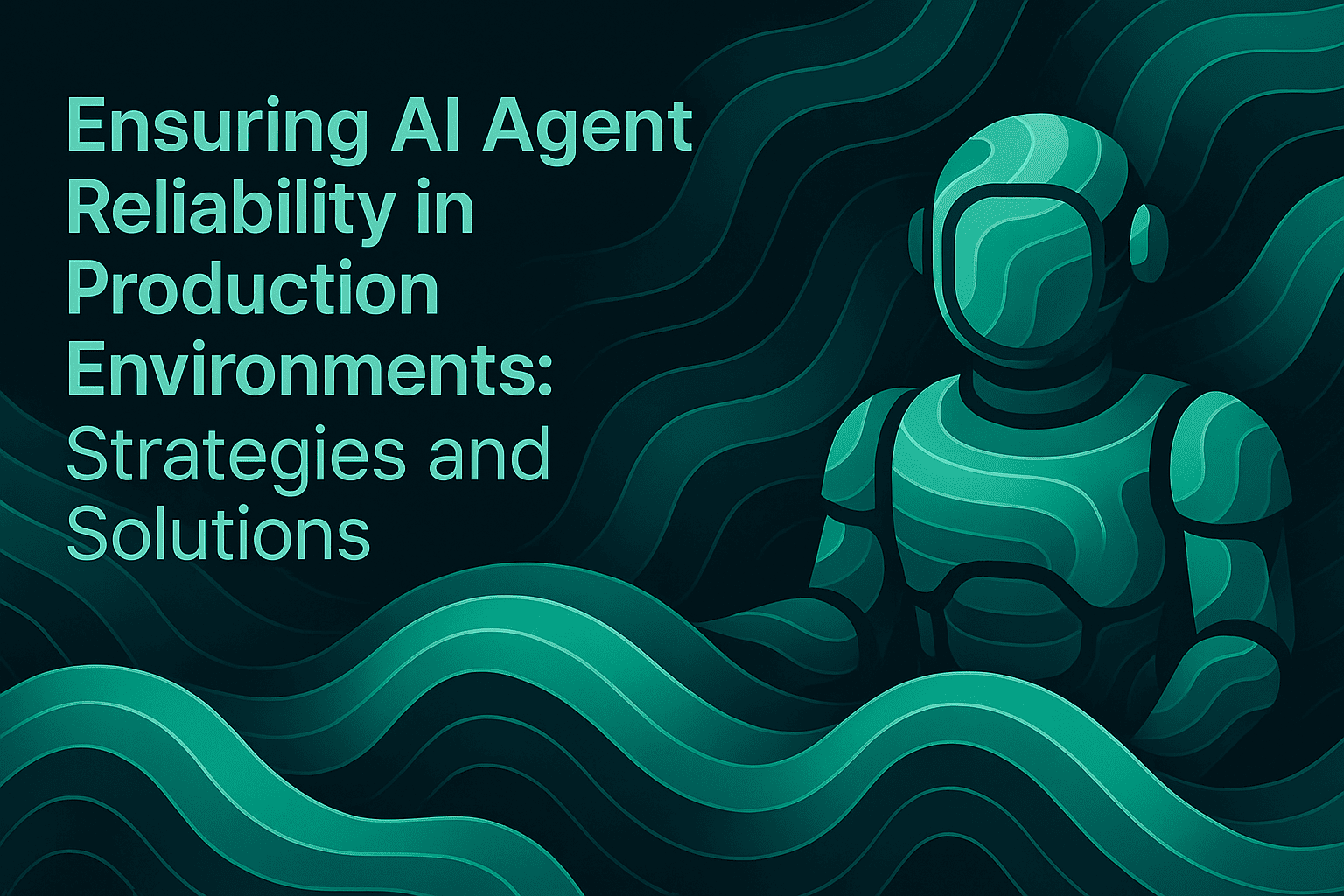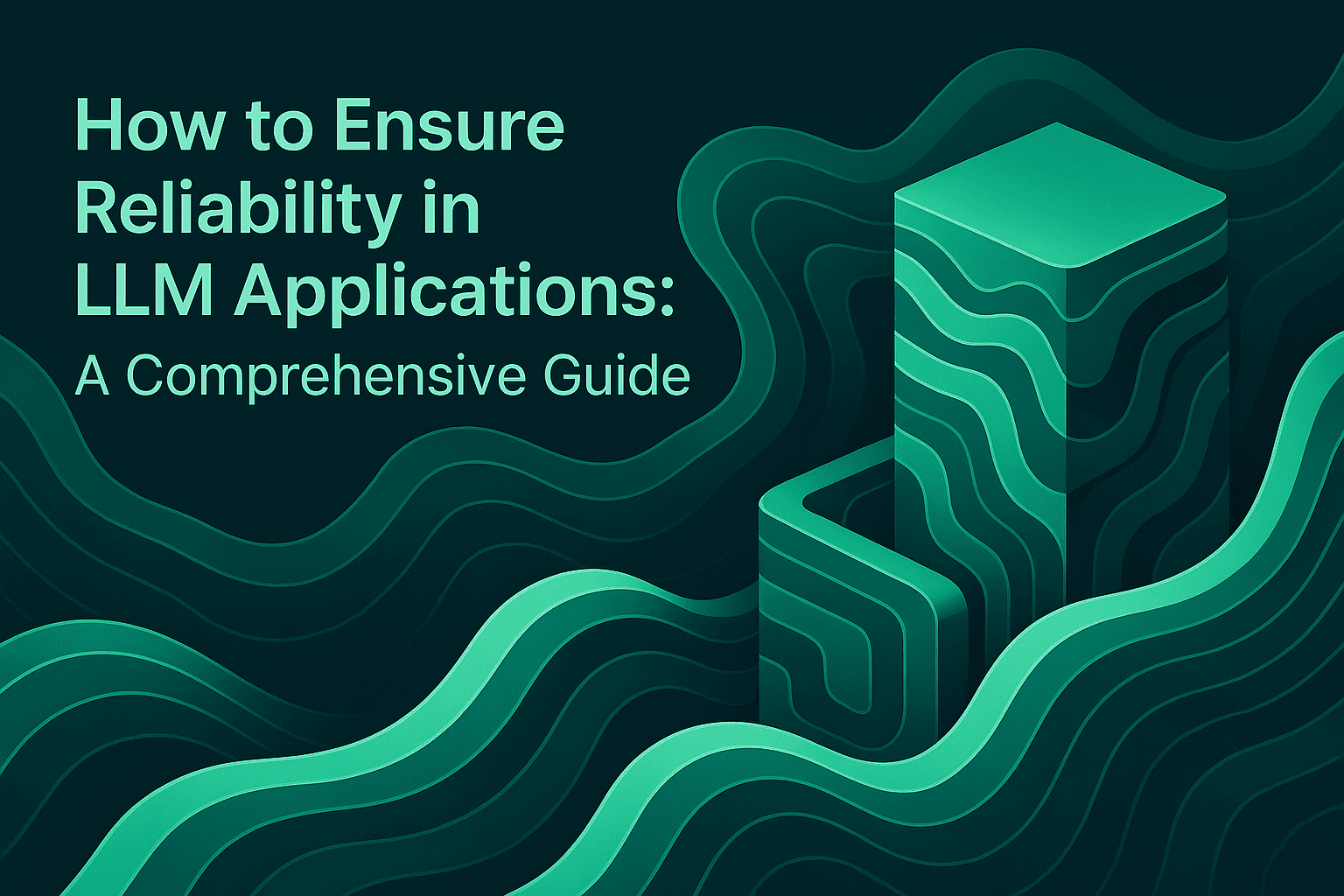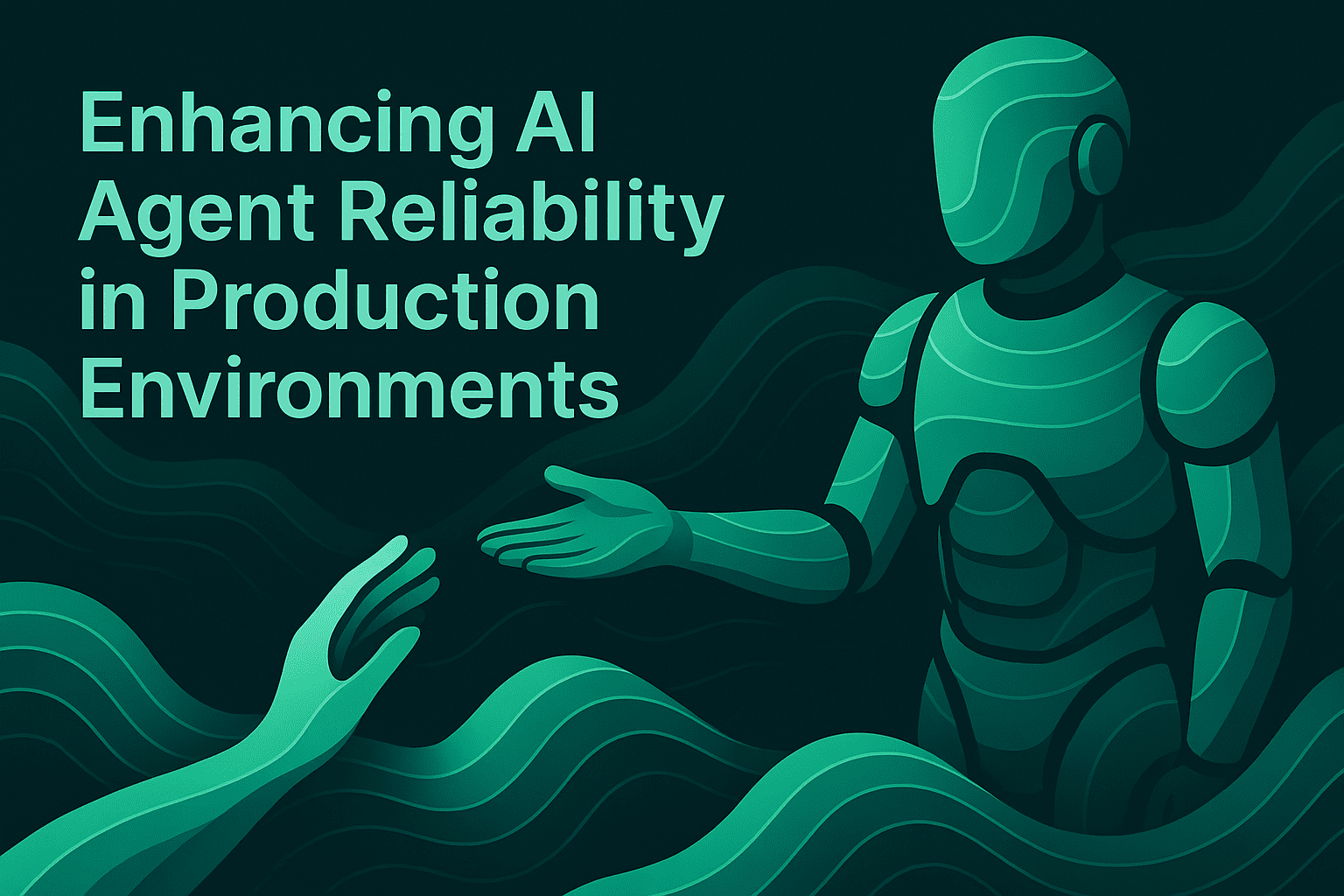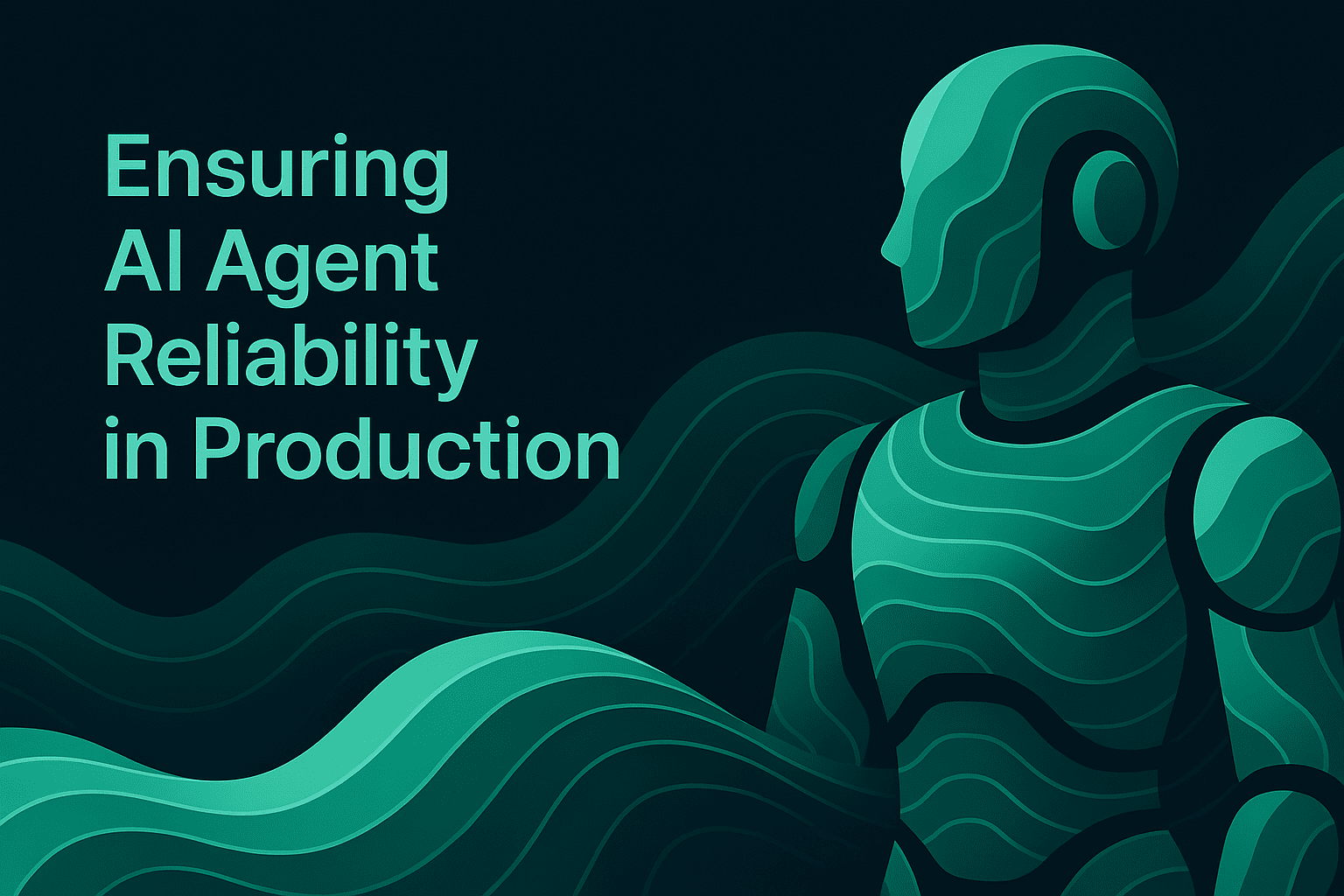Ensuring AI Agent Reliability in Production Environments: Strategies and Solutions

TL;DR
AI agent deployments face significant reliability challenges, with industry reports indicating that 70-85% of AI initiatives fail to meet expected outcomes. Production environments introduce complexities such as non-deterministic behavior, multi-agent orchestration failures, and silent quality degradation that traditional monitoring tools cannot detect. Organizations need comprehensive strategies combining agent observability, continuous evaluation, simulation testing, and robust error handling to ensure reliable AI agent performance. Platforms like Maxim AI provide end-to-end solutions for simulation, evaluation, and observability, enabling teams to ship AI agents reliably and more than 5x faster.
The Critical Challenge of AI Agent Reliability
The promise of AI agents to automate complex workflows and deliver autonomous decision-making has captured significant enterprise attention. However, the reality of production deployments reveals a sobering truth: most AI agent initiatives struggle to achieve reliable performance at scale.
Recent industry analysis shows that between 70-85% of AI deployment efforts fail to meet their desired return on investment. More specifically, research indicates that 73% of enterprise AI agent deployments experience reliability failures within their first year of production.
The reliability crisis extends beyond initial deployment challenges. Studies reveal that 67% of production RAG systems experience significant retrieval accuracy degradation within 90 days of deployment. AI agents using foundation models like GPT-4o demonstrate failure rates exceeding 91% for complex office tasks, while some commercial implementations approach 98% failure rates.
These statistics highlight a fundamental disconnect between AI agent capabilities demonstrated in controlled environments and their performance in real-world production settings. Traditional software reliability approaches prove inadequate for managing probabilistic systems where failures often manifest as subtle quality degradation rather than clear system errors.
Understanding Production-Specific AI Agent Failures
AI agents fail in production environments through mechanisms fundamentally different from traditional software applications. These failure modes require specialized detection and remediation strategies.
Silent Quality Degradation
Unlike traditional applications that fail with clear error messages, AI agents frequently experience silent quality degradation. An enterprise customer support team discovered their AI agent was providing increasingly aggressive responses to frustrated customers. Traditional monitoring showed normal operation with fast response times and low error rates. The underlying issue only emerged when customer satisfaction scores plummeted over several weeks.
The root cause involved the agent's training data containing customer service interactions that became more assertive under stress. Production interactions triggered this learned behavior pattern, creating a quality problem invisible to conventional monitoring tools. Enterprise teams report spending 40-60% of their AI operations time manually auditing agent responses because automated detection methods cannot identify these reliability issues.
Orchestration Complexity
Modern AI agents operate within complex orchestration workflows involving multiple models, APIs, and data sources. Each additional component exponentially increases potential failure points. A simple AI agent workflow involving document retrieval, LLM inference, external API calls, and response formatting can achieve only 98% combined reliability when individual components maintain 99-99.9% uptime.
This multiplication of failure probabilities means even highly reliable individual components produce unreliable systems when orchestrated together. The challenge intensifies with multi-agent systems where agents must coordinate actions, share context, and maintain consistency across distributed operations.
Context and Memory Failures
AI agents rely on maintaining context across multi-turn interactions and retrieving relevant information from knowledge bases. Context poisoning, where malicious or erroneous inputs corrupt agent memory, creates cascading failures throughout agent workflows. Similarly, embedding model drift affects similarity calculations in retrieval systems, causing knowledge gaps that degrade agent performance over time.
Resource Optimization Problems
Production AI agents must balance quality, latency, and cost constraints continuously. Poorly optimized prompt chains create resource exhaustion scenarios where agents consume excessive API tokens or processing time. These inefficiencies compound across high-volume production workloads, creating both performance bottlenecks and unsustainable operational costs.
Core Strategies for AI Agent Reliability
Ensuring AI agent reliability in production requires implementing comprehensive strategies across the development and deployment lifecycle. Organizations that successfully deploy reliable AI agents consistently apply several core practices.
Implement Comprehensive Agent Observability
Agent observability extends traditional application monitoring to capture AI-specific metrics and behaviors. Unlike conventional monitoring focused on uptime and response times, AI observability tracks reasoning quality, factual accuracy, and decision-making patterns.
Effective observability implementations monitor four interdependent pipeline components: data quality, system performance, code behavior, and model responses. Organizations need visibility into token usage patterns, latency distributions across multi-step workflows, error rates by failure type, and task completion success rates.
Distributed tracing capabilities allow teams to follow agent execution paths from initial prompts through tool invocations to final outputs. This granular visibility enables precise diagnosis of bottlenecks and failure points within complex agent workflows. Organizations implementing comprehensive observability reduce mean time to resolution for agent issues by identifying problems before they impact end users.
Maxim's agent observability platform provides distributed tracing with real-time monitoring of production logs. Teams can track and debug live quality issues while running periodic quality checks to ensure ongoing reliability. The platform supports multiple repositories for different applications, enabling centralized visibility across diverse AI agent deployments.
Deploy Continuous Evaluation Frameworks
Continuous evaluation measures agent quality systematically using both automated and human assessment methods. Organizations need evaluation frameworks that operate at multiple granularity levels, from individual tool calls to complete multi-turn conversations.
Evaluation strategies should incorporate multiple evaluator types: deterministic rules for validating specific outputs, statistical methods for detecting distribution shifts, and LLM-as-a-judge approaches for assessing subjective quality dimensions. Pre-built evaluators accelerate implementation while custom evaluators address application-specific requirements.
Human evaluation remains essential for last-mile quality validation and capturing nuanced assessments that automated methods cannot replicate. Organizations should establish workflows for collecting human feedback efficiently and incorporating those insights into continuous improvement cycles.
Maxim's evaluation framework enables teams to configure evaluations with fine-grained flexibility through both code-based SDKs and no-code UI interfaces. The platform supports evaluation at session, trace, or span levels, ensuring comprehensive quality measurement across agent architectures. Teams can visualize evaluation runs across multiple prompt versions or workflow configurations to quantify improvements or regressions before deployment.
Leverage Simulation for Pre-Production Testing
Simulation enables teams to test AI agents across hundreds of scenarios and user personas before production exposure. AI-powered simulations generate realistic customer interactions representing diverse use cases, edge cases, and failure scenarios that agents must handle reliably.
Effective simulation approaches evaluate agents at conversational levels, analyzing whether agents choose appropriate trajectories, complete tasks successfully, and handle exceptions gracefully. Organizations can re-run simulations from specific steps to reproduce issues, identify root causes, and validate remediation efforts.
Simulation testing reveals reliability problems during development rather than production, dramatically reducing the cost and user impact of quality issues. Teams using simulation report significant improvements in agent reliability metrics before initial deployment.
Maxim's simulation platform allows teams to monitor how agents respond at every step of simulated interactions. The platform identifies points of failure and enables iterative debugging to improve agent performance systematically before production release.
Establish Robust Error Handling and Fallback Mechanisms
Production-grade AI agents require error handling strategies designed specifically for probabilistic systems. Organizations should implement graceful degradation patterns where agents maintain reduced functionality rather than complete failure when components malfunction.
Fallback mechanisms enable agents to route requests to alternative models, providers, or processing paths when primary systems experience issues. Automatic retry logic with exponential backoff helps agents recover from transient failures without overwhelming upstream services.
Timeout management prevents agents from blocking indefinitely on unresponsive external services. Circuit breaker patterns detect persistent failures and route traffic away from failing components until health is restored.
For organizations using multiple LLM providers, Bifrost AI gateway provides automatic failover and load balancing across providers. The gateway offers a unified OpenAI-compatible API supporting 12+ providers with zero-downtime failover between models and providers when reliability issues occur.
Implement Governance and Safety Controls
Production AI agents require governance frameworks ensuring they operate safely, ethically, and in compliance with organizational standards. Governance controls include usage tracking, rate limiting, and fine-grained access control to prevent unauthorized actions.
Organizations should establish safeguards monitoring for toxic content, personally identifiable information leakage, and violations of content policies. Real-time alerts notify teams when agents deviate from expected behaviors or attempt unauthorized operations.
Budget management capabilities enable hierarchical cost control with virtual keys and team-level spending limits. These controls prevent runaway costs from poorly optimized agents while maintaining visibility into resource consumption patterns.
Bifrost's governance features provide comprehensive usage tracking, rate limiting, and budget management. The gateway integrates with security tools for API key management and supports SSO authentication for enterprise access control requirements.
Building a Reliability-First Development Culture
Technical strategies alone cannot ensure AI agent reliability without organizational commitment to reliability-first principles. Successful organizations embed reliability considerations throughout the development lifecycle.
Start with Clear Business Objectives
The most reliable predictor of AI agent success involves starting with specific business pain points rather than technical capabilities. Organizations should articulate the non-AI alternative cost before drafting AI specifications. Clear success metrics and service-level objectives guide development priorities and prevent feature drift.
Product managers should own model services with explicit SLOs such as "summary accuracy greater than 85% with less than 5-second latency 95% of the time." These concrete targets enable objective evaluation of whether agents meet reliability requirements.
Establish Cross-Functional Collaboration
AI agent reliability requires coordination across product, engineering, data, and compliance teams. Organizations suffer when these teams operate in silos with disconnected success metrics and timelines. Shared visibility into agent performance fosters collaborative problem-solving and prevents duplicate efforts.
Platforms enabling product teams to participate in evaluation and monitoring without extensive coding reduce engineering dependencies and accelerate iteration cycles. Maxim's user experience allows product teams to organize and version prompts, deploy with different parameters, and compare quality across model configurations without code changes.
Adopt Iterative Development Approaches
Organizations that succeed with AI agents begin with narrow, high-value use cases and expand gradually after proving reliability. Starting with complex multi-step processes touching dozens of systems creates too many variables and potential failure points for effective debugging.
The pattern of automating one specific task extremely well before moving to the next reduces complexity and enables faster iteration. Teams can apply learnings from initial deployments to subsequent agent implementations, compounding reliability improvements across the agent portfolio.
Invest in Data Quality and Curation
Poor data quality represents the most significant barrier to AI reliability, with 92.7% of executives identifying data challenges as obstacles to successful AI implementation. Organizations need systematic approaches to data curation, including importing diverse datasets, enriching data through labeling and feedback, and continuously evolving datasets from production experiences.
Maxim's data engine enables seamless multi-modal data management with capabilities for dataset imports, continuous curation from production data, and data enrichment through human-in-the-loop workflows. Teams can create data splits for targeted evaluations and experiments, ensuring agents train and evaluate on representative, high-quality data.
Advanced Reliability Techniques
Organizations achieving exceptional AI agent reliability implement advanced techniques beyond foundational practices.
Multi-Source Retrieval for Robustness
Single-source retrieval creates single points of failure in RAG-based agents. Implementing multi-source retrieval with diverse embedding approaches increases reliability by reducing dependence on any single retrieval mechanism. Organizations can compare results across retrieval methods to identify consensus and flag potential hallucinations when sources disagree.
Semantic Caching for Consistency
Semantic caching stores responses to semantically similar queries, improving both consistency and latency. When agents receive queries similar to previous interactions, cached responses ensure consistent behavior while reducing LLM inference costs. This approach particularly benefits agents handling repetitive query patterns with known correct responses.
Bifrost's semantic caching feature provides intelligent response caching based on semantic similarity, reducing both latency and costs while improving consistency across similar requests.
Drift Detection and Alerting
Proactive drift detection identifies when agent behavior deviates from expected patterns before quality degradation becomes severe. Organizations should monitor statistical distances between training and production data distributions, tracking metrics like Wasserstein or Kullback-Leibler divergence.
Real-time alerts enable rapid intervention when agents exhibit unexpected behaviors. Alert correlation techniques group related alerts to reduce noise and provide coherent views of systemic issues rather than treating symptoms as isolated problems.
Model Context Protocol Integration
The Model Context Protocol enables AI agents to access external tools such as file systems, web search capabilities, and databases in standardized ways. This protocol reduces integration complexity while providing consistent interfaces for tool invocation across different agent implementations.
Bifrost supports Model Context Protocol integration, enabling agents to use external tools reliably with reduced custom integration overhead.
Measuring and Optimizing Agent Reliability
Organizations must establish systematic approaches to measuring agent reliability and driving continuous improvement.
Define Comprehensive Reliability Metrics
Reliability measurement requires tracking multiple metric dimensions simultaneously. Performance metrics include response time, latency by processing stage, and throughput. Reliability metrics encompass error rates by type, task completion rates, and uptime against SLOs.
Quality metrics assess output accuracy, hallucination rates, and alignment with user intent. Cost metrics track API usage, token consumption, and infrastructure resource utilization. Behavioral metrics monitor tool invocation patterns, knowledge base retrieval effectiveness, and drift from expected behaviors.
Implement Continuous Monitoring Dashboards
Real-time dashboards unify metrics, traces, and logs for comprehensive visibility into agent health. Dashboards should support customization enabling teams to create views optimized for their specific reliability concerns and operational workflows.
Maxim's custom dashboards give teams control to create insights cutting across custom dimensions with a few clicks. Organizations can monitor agent behavior across dimensions relevant to their optimization priorities without extensive engineering effort.
Establish Feedback Loops
Reliability improvements require systematic feedback loops translating observability insights into iterative enhancements. Organizations should feed observability data into retraining workflows, evaluation dataset curation, and prompt optimization efforts.
Human feedback collection mechanisms enable teams to gather qualitative insights about agent performance that quantitative metrics may not fully capture. These insights inform both immediate fixes and longer-term capability improvements.
Conclusion
AI agent reliability in production environments requires fundamentally different approaches than traditional software development. Organizations must recognize that 70-85% failure rates reflect systemic challenges rather than temporary growing pains.
Success demands comprehensive strategies spanning observability, evaluation, simulation, error handling, and governance. Technical capabilities must combine with organizational commitment to reliability-first development cultures. Teams need platforms supporting the full agent lifecycle from experimentation through production monitoring.
The gap between AI agents that work in demos and agents that work reliably in production determines which organizations will succeed with AI automation. Investing in reliability infrastructure and practices is not optional for organizations serious about deploying AI agents at scale.
Platforms like Maxim AI provide the integrated capabilities teams need to ship reliable AI agents 5x faster. By unifying experimentation, simulation, evaluation, and observability in a single platform, Maxim enables cross-functional teams to collaborate effectively on building production-grade AI applications.
Ready to ensure your AI agents perform reliably in production? Get started with Maxim or schedule a demo to see how our platform helps teams ship trustworthy AI agents faster.


